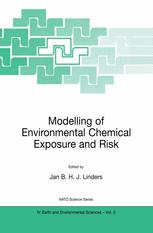

Most ebook files are in PDF format, so you can easily read them using various software such as Foxit Reader or directly on the Google Chrome browser.
Some ebook files are released by publishers in other formats such as .awz, .mobi, .epub, .fb2, etc. You may need to install specific software to read these formats on mobile/PC, such as Calibre.
Please read the tutorial at this link: https://ebookbell.com/faq
We offer FREE conversion to the popular formats you request; however, this may take some time. Therefore, right after payment, please email us, and we will try to provide the service as quickly as possible.
For some exceptional file formats or broken links (if any), please refrain from opening any disputes. Instead, email us first, and we will try to assist within a maximum of 6 hours.
EbookBell Team

4.7
76 reviewsMathematical models are being increasingly used to estimate the concentrations of a wide range of substances in the environment for a variety of reasons, including government control and legislation, and risk and hazard estimation. Exposure assessment has to be performed for many types of substances, including pesticides, industrial chemicals, pollutants, accidental discharges, etc. The interpretation of the results of model equations should always bear in mind the purpose for which the model used was built in the first place. Further, models are always an abstraction of reality, requiring simplifying assumptions to keep the models within the restraints posed by computer performance and/or scientific knowledge.
The present book treats the theme of modelling chemical exposure and risk in terms of four main topics: model characteristics, applications, comparison of estimated with measured concentrations, and modelling credibility.